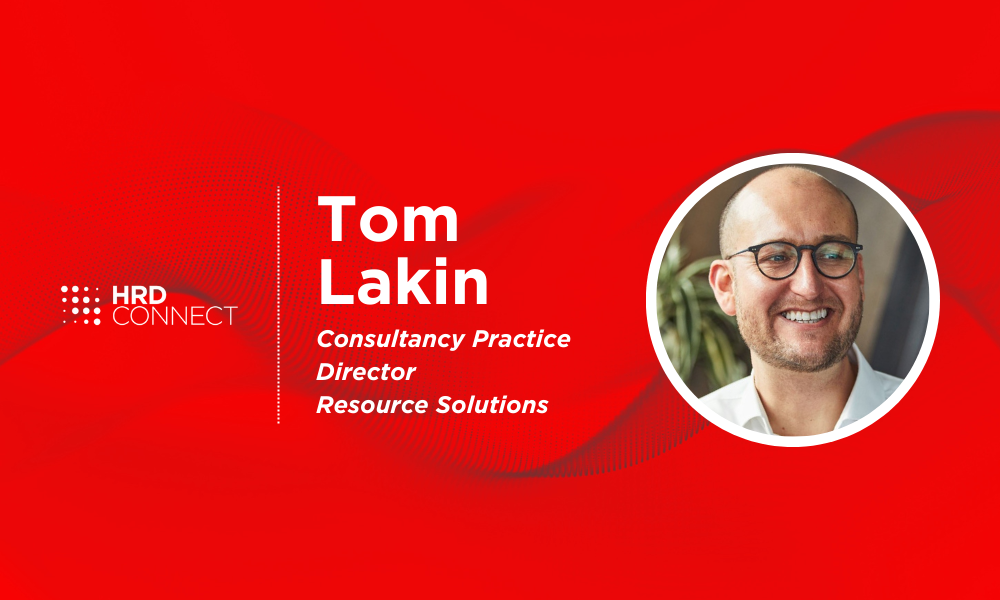The HR Leader's guide to a comprehensive ESG strategy
- 6 Min Read
As employee and candidate attitudes toward sustainable, responsible business shift, HR practitioners should lead rather than follow. So, what ESG strategies can HR leaders implement to meet sustainability commitments, attract top talent, and boost retention?
- Author: Tom Lakin
- Date published: Apr 26, 2023
- Categories

Environment, Social, and Governance (ESG) has long been high on the agenda for investors and C-suite alike but, to date, HR leaders have rarely shaped corporate ESG approaches.
Climate change has shifted from being something that impacts others to something that impacts us. 2022 saw countries and cities impacted that may have previously felt safe from the impacts of temperature changes, from droughts in the UK to severe heatwaves in the US and Canada.
The impact on social activities and the way we live our day-to-day lives arguably brings reality home to many. Attitudes change at speed and these shifting attitudes bleed from society into the workplace. HR leaders need to take note.
Audit your employee sustainability proposition (ESP)
The very first step is to understand your organizational approach to ESG-related commitments, targets, policies, approaches, and employee benefits. This makes up your ESP. It is the ESG promise you make as an employer to your employees in return for their commitment. This promise entails the sum of all the benefits and rewards an employee receives.
Auditing this is complex but without this deep understanding, it’s difficult for HR leaders to know what they are excelling at, where weaknesses exist, and, crucially, what changes are required. Most organizations choose to use a specialist external vendor for this audit. If you have the knowledge and capability internally, then it is possible to conduct this audit in-house. But it must be impartial and research-based.
Understand your employee sentiment, perspectives, and viewpoints
Organizations frequently use employee engagement surveys to measure and track employee sentiment. They are also an effective way to capture your organizational ESG context. What is worrying your employees? What are their primary work purpose and meaning drivers? Are your employees happy with environmental and diversity initiatives currently?
Avoid leading questions and where possible capture employee demographics to help you segment the data. Do different regions or teams have different belief systems or values from others?
Each organization will be different, and this contextual information will ensure you shape your ESG-led HR initiatives tailored to their needs and wants.
Understand why top talent is leaving your organization
Whether through exit interviews or surveys, it’s essential to capture the reasons why leavers are moving on. If climate or conscience-related reasons for quitting are becoming a trend, it’s a sign that your organizational approach to sustainable, responsible business is no longer meeting the required standard to attract and retain in-demand talent.
Listen to peer reviews & ask alumni
When embedding ESG into your HR strategy, it can be tempting to focus only on your current employee population. However, it is important to listen to what previous employees are saying too. The easiest way to capture this, particularly for larger employers, is to analyze peer reviews. Talent trust platforms including Glassdoor. Our research identified it as the second most trusted source of employer information.
Many lower-scoring reviews on such platforms provide details relating to workplace culture and environmental/diversity authenticity. Asking your alumni communities through surveys can also provide useful data and ex-employees are often willing to provide more honest critiques than your current employees.
Why is ESG important for HR leaders?
ESG commitments in corporate annual reports were historically brief, vague, and largely related to Corporate Social Responsibility initiatives. Those days have long gone. Increased regulation and investor pressure now drive organizations to make public and science-based commitments and targets. Organizations measure and report on these stated objectives. They are often stretch targets meaning they are not necessarily easy or feasible to achieve without significant change.
Embedding ESG and sustainability in HR strategy and delivery remains relatively new but businesses are increasingly bringing HR leaders into the conversation. Crucially, they are well-placed to drive meaningful change. Yet ESG and climate change can feel abstract at times to HR leaders. Yes, it may be an issue, but how does it relate to the remit of HR?
Attracting in-demand talent
Arguably the biggest challenge HR face in 2023 is the hiring of skilled, productive, and in-demand talent. Despite the perceived softening of the economy, job advertisements, whilst declining on historic highs of 2021 and 2022, remain high. The number of vacancies in January 2023 was 1,124,000, a 50% increase on January 2020. Employers increasingly need to embed purpose and meaning into their employer value proposition to attract talent as employees now place sustainability at the forefront of employment decisions. Two in three UK employees and three in four US employees want to work for a company that is having a positive impact on the world according to recent research by former Unilever chief executive Paul Polman.
Of course, not all talent has the same views or priorities relating to ESG. Some demographics and geographies have very different perspectives and priorities from others. The most striking – though unsurprising – finding is that younger people are more worried about climate change than older people. Two in three Gen Zs (68%) are anxious about environmental issues, more than any other generation.
Breaking down the data beyond age becomes particularly interesting. Many Gen Z individuals who are open-minded, determined, and passionate (often the traits needed to be pioneering corporate leaders), are identified as ‘authentic activists.’ They are motivated by the obligation to save the world. Engaging this talent with an authentic employee sustainability proposition is key and it is HR leaders who can create, nurture, and deploy this narrative.
Retaining top talent
ESG isn’t just significant in an organization’s ability to attract and onboard new employees. It’s also a notable factor in retaining them. Health insurance company Bupa found in 2021 that 64% of surveyed 18 to 22-year-olds consider it important for employers to act on environmental issues, and 59% would remain longer with responsible employers.
‘Conscience quitting’ and ‘climate quitting’ aren’t just another HR buzzword in the ever-expanding HR lexicon. Paul Polman’s research found nearly half of employees say they would consider resigning from their job if the values of the company did not align with their values (45% UK, 51% US). Of course, it is easy to state that one ‘may consider’ quitting. But a third say they already have resigned from a position for this reason (35% in both the UK and the US).
________________
Tom Lakin is Consultancy Practice Director at Workforce Advisory and Recruitment Specialists, Resource Solutions. Tom advises clients on ESG for HR, Diverse Hiring, HR ethics, and the Future of Work.










